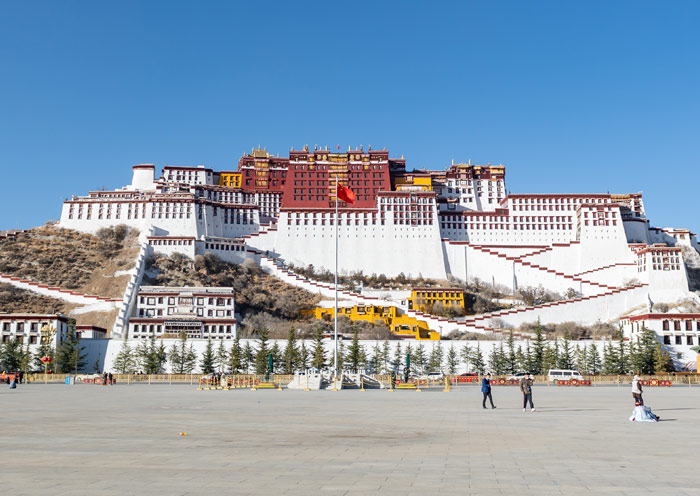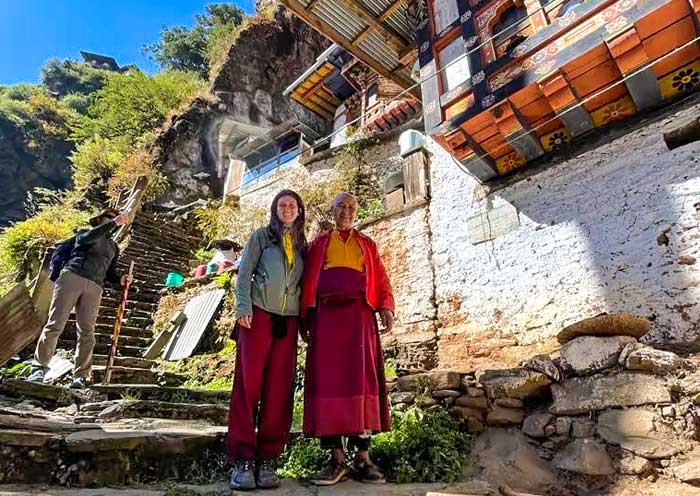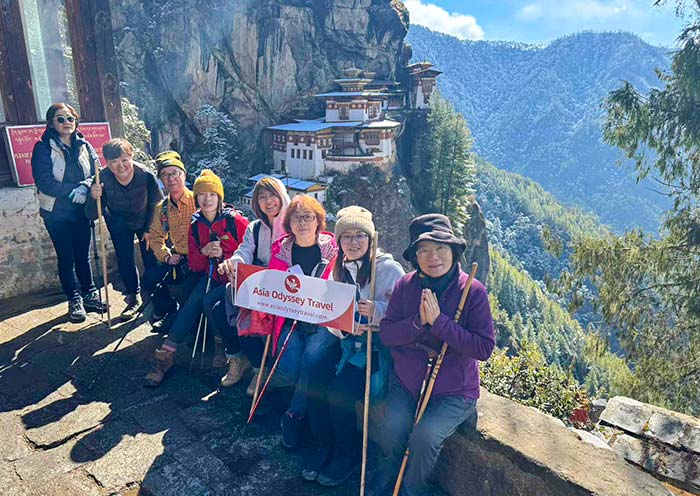Warning: implode(): Invalid arguments passed in /www/wwwroot/asiaodysseytravel/asiaodysseytravel01/e/data/tmp/tempnews43_all.php on line 896
The Best Time to Visit Nepal Tibet & Bhutan: Apr-May, Sept-Nov
Adjacent in the Himalayas, Tibet, Nepal, and Bhutan share some climatic similarities; however, significant differences are also part of their unique charm, making the quest to combine optimal weather conditions for a trip through all three destinations a bit of a jigsaw puzzle.
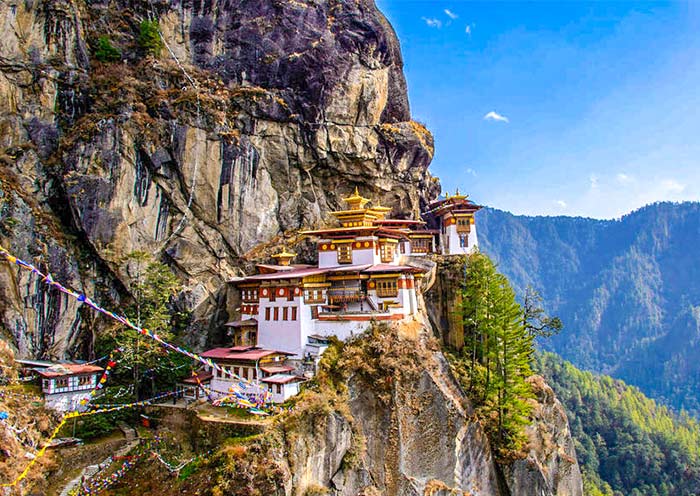
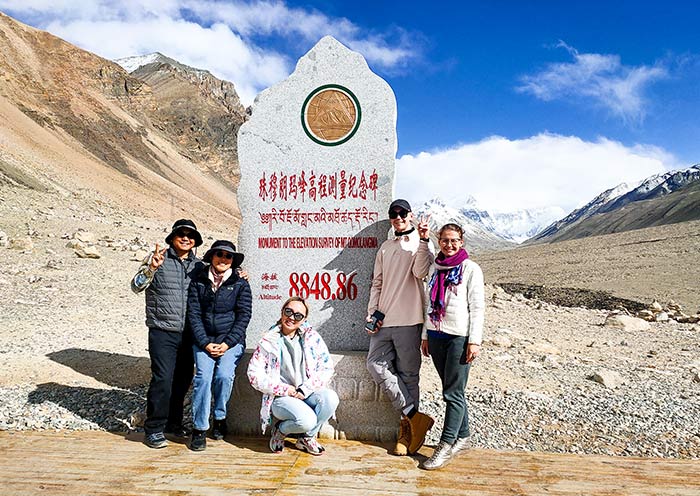
But fear not, the pieces fall perfectly into place during two key periods: The best time to visit Tibet Nepal and Bhutan are April to May and September to November. These months are the sweet spot for visiting Tibet, Nepal, and Bhutan. To maximize your travel experience, it's beneficial to delve deeper into the best times to visit each location:
Best Time to Visit Nepal & Weather Conditions
Nepal predominantly experiences a tropical monsoon climate with average temperatures ranging between 10°C and 35°C (50°F to 95°F), and distinct seasons throughout the year.
The months of March to May (spring) and September to November (autumn) are widely regarded as the best times to visit. During these periods, the weather is mostly sunny and mild, offering excellent conditions for various travel and outdoor activities, with clear views of the majestic Himalayas.
Spring (March to May): Spring travel in Nepal is delightful, with rhododendrons and wildflowers blooming across the hillsides. The weather is clear and warm, ideal for all types of tourism.
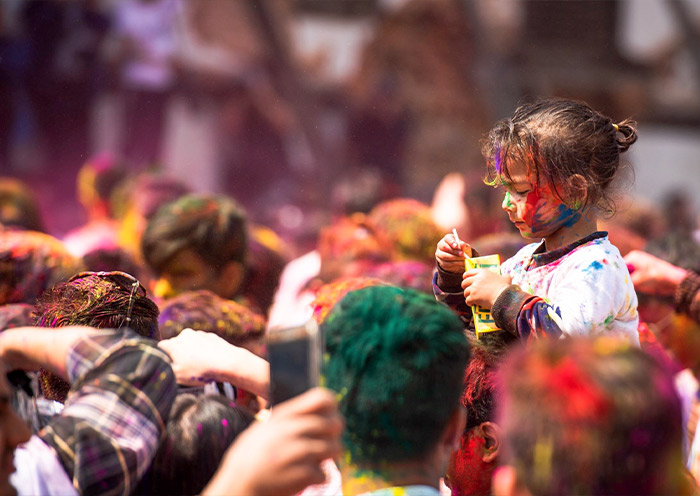
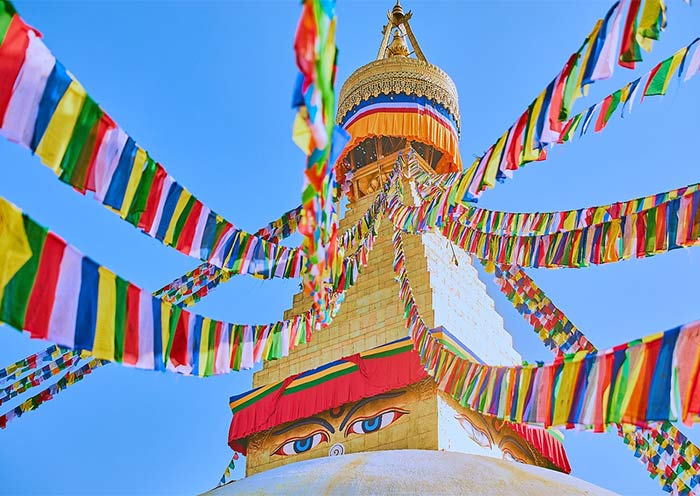
Autumn (September to November): After the monsoon season, the skies clear up and the humidity drops. This is the perfect time for trekking, as the air is crisp and the mountain vistas are at their most stunning. Autumn also brings vibrant festivals like Dashain and Tihar.
Summer (June to August): The monsoon season in Nepal can create some travel challenges with muddy roads and significant rainfall. However, it's still a good time to visit Kathmandu to enjoy a quieter cultural atmosphere and avoid the crowds.
Winter (December to February): It's cold, particularly at higher altitudes, with fewer tourists and peaceful, snow-covered landscapes offering a different perspective of Nepal.
Best Time to Visit Nepal & Worst Time to Visit Nepal >>
Best Time to Visit Tibet & Weather Conditions
Tibet, often heralded as the "Roof of the World," is famous for its high-altitude climate, meaning you can expect significant diurnal temperature variation. Summers boast average high temperatures around 25°C (77°F) and generous amounts of sunshine.
Given Tibet's unique climate, the best time to Visit Tibet typically spans from April to October. During this time, the climate is relatively mild and the skies are a brilliant blue, offering favorable conditions for sightseeing and outdoor activities.
Late Spring and Early Summer (April to June): This season witnesses Tibet bursting into life, with flowers blooming across the plateau. The weather warms up, creating a comfortable environment for travelers. Clear views of Mount Everest from the base camp are a particular highlight at this time.
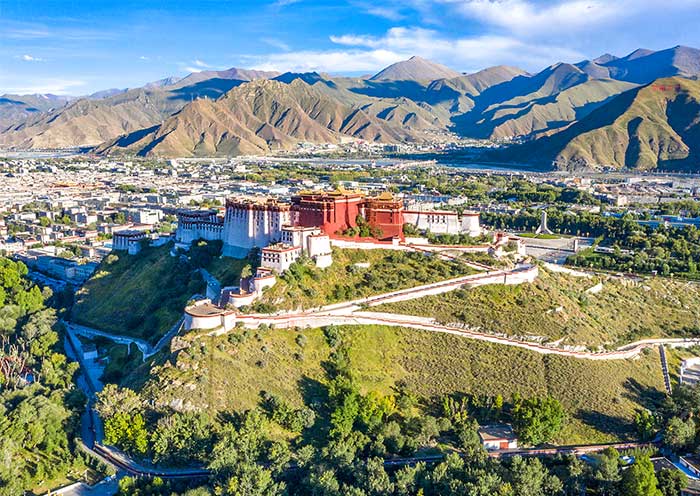
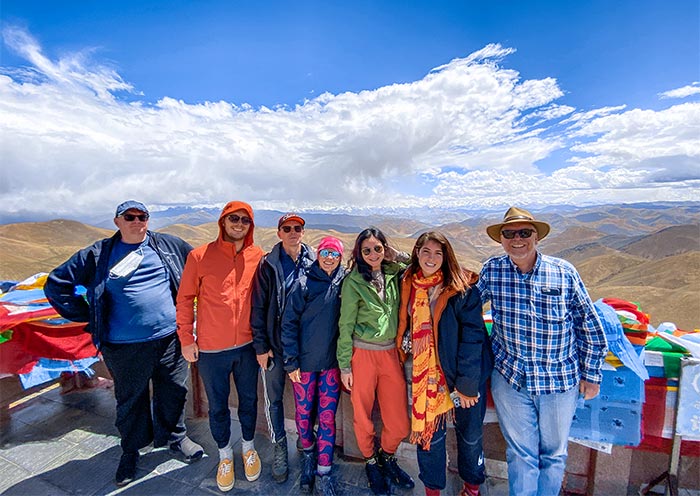
Autumn (September to October): The monsoon rains have usually subsided, leaving behind clear skies and comfortable temperatures. This is considered the peak season for trekking, as the visibility of Tibet's stunning landscapes and the views of Mount Everest are optimal.
Summer (July to August): The rainy season in Tibet is less intense compared to neighboring regions, with occasional showers that mainly occur in the afternoon and are unlikely to significantly disrupt travel plans. The landscape is verdant and vibrant, offering a different kind of beauty.
Winter (November to March): Nights can be cold, with temperatures dropping below freezing. However, the region is sunny during the day, with cool to crisp temperatures rather than harsh cold, allowing for pleasant visits to major attractions like the Potala Palace in Lhasa.
Tibet Winter: Top Reasons to Visit Tibet in Winter >>
Best Time to Visit Bhutan & Weather Conditions
Bhutan's climate is varied, ranging from subtropical in the south to temperate on the highlands and alpine in the northern mountains. Depending on altitude, temperatures can fluctuate between 5°C and 25°C (41°F to 77°F). Just as with its Himalayan neighbor Nepal, your travel plans to Bhutan should take into account the monsoonal influences.
The best times to visit are during the spring (March to May) and autumn (September to November). These seasons boast sunny and clear weather, perfect for trekking and taking in the magnificent views of Bhutan's mountainous terrain.
Spring (March to May): Bhutan in spring is captivating, with valleys awash in pink and white blossoms. Jacarandas in Punakha create a dreamlike paradise. The weather is comfortably warm and the air is crisp, making it ideal for hiking and cultural excursions. It is also the time for the celebrated Paro Tshechu.
Autumn (September to November): After the monsoon, the skies become clear and the air refreshes. It's an excellent season for trekking, with the Himalayas revealed in all their glory. The popular Thimphu Tshechu festival takes place in this season as well.
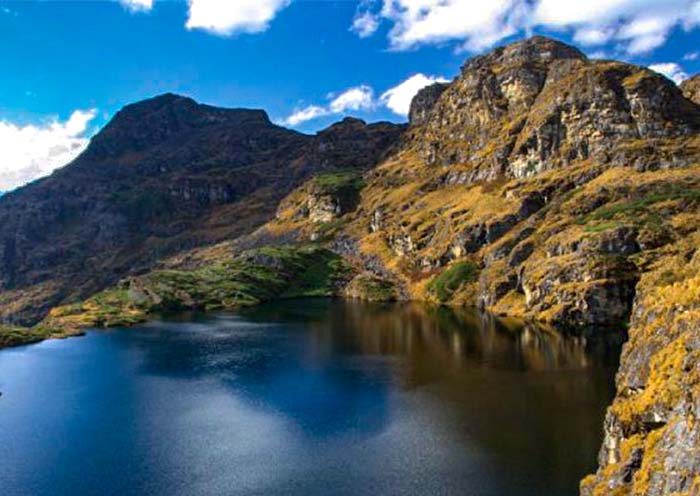
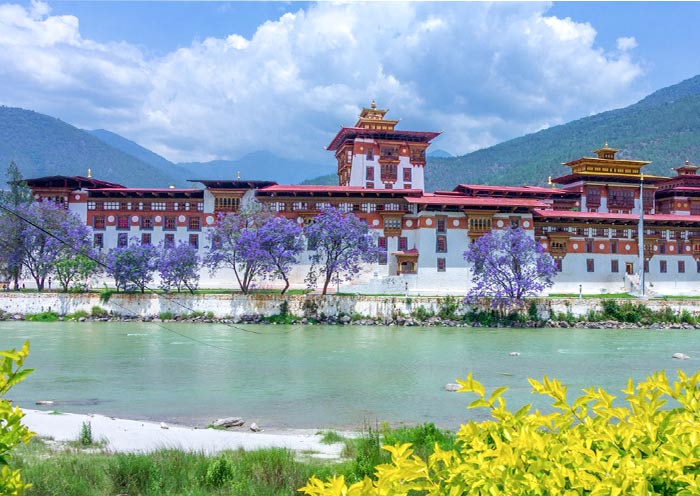
Summer (June to August): The monsoon season brings heavy rains, particularly in the southern regions, which can affect travel. However, areas like Paro, Thimphu, and Punakha are less impacted and remain accessible.
Winter (December to February): This is a tranquil time to visit for those who appreciate the more serene side of Bhutan and don't mind the cold. The crisp winter skies offer some of the most striking views of the Himalayan range.
Bhutan Winter: Visit Bhutan in Winter >>
Best Time to Visit Tibet Nepal & Bhutan
If you're planning a grand tour of Tibet, Nepal, and Bhutan and aiming for the finest weather at each destination, here's when to go:
April - May: Tibet greets spring with milder temperatures, perfect for touring cultural gems like the Potala Palace and natural wonders including the Everest Base Camp. Over in Nepal, trekking is prime as the hillsides dazzle with blooming rhododendrons. Wildlife watching is also at its peak, with animals out and about in the national parks.
Bhutan matches this floral display, with its own rhododendrons and jacarandas creating a botanical spectacle not to be missed.
September - October: The trekker's dream season across Tibet, Nepal, and Bhutan. From the unparalleled views at Tibet's Everest Base Camp to the adventure-rich landscapes of Pokhara, Nepal, and the ascent to Bhutan's revered Tiger's Nest Monastery, the weather is your ally, with clear skies and pleasant temperatures.
November: As Tibet starts to feel the winter chill, early November remains a window for experiencing its majestic landscapes and cultural landmarks. Meanwhile, Bhutan and Nepal continue to offer exceptional conditions for outdoor pursuits and to bask in the rich, autumnal hues that paint their terrains.
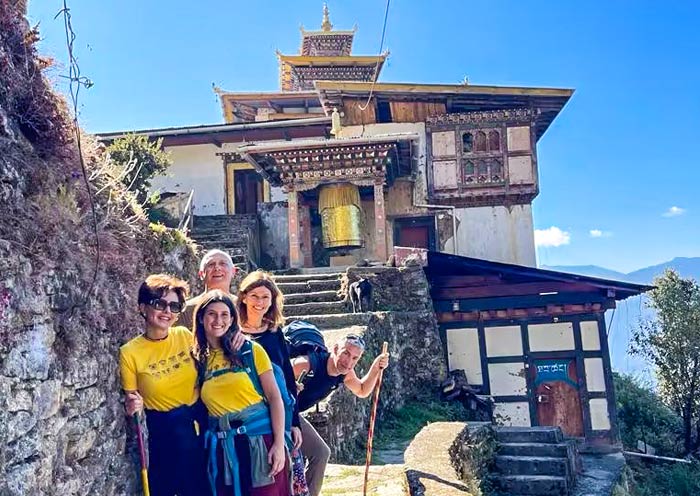
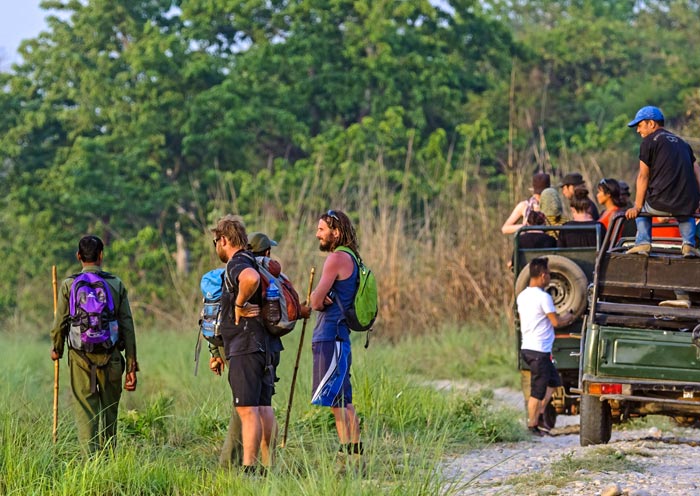
Best Time to Tour Tibet Nepal and Bhutan: Festivals & Culture
| Monate | Festivals |
|---|---|
| Feb | Punakha Tchechu Festival(Bhutan) |
| Mar | Paro Tshechu Festival(Bhutan), Holi(Nepal) |
| May | Saga Dawa Festival(Tibet) |
| August | Shoton Festival(Tibet) |
| Sept | Dashain(Nepal), Thimphu Tshechu Festival(Bhutan) |
| Oct |
Tibet, Nepal and Bhutan are also a tapestry of vibrant festivals and a rich cultural heritage. To truly immerse yourself in the local culture and festivities, timing your visit to coincide with these events can offer a deeper and more colorful travel experience. Here's a glimpse into when you can witness the most captivating cultural celebrations in each destination:
Tibet:
Losar (Tibetan New Year): Usually in February or March, this is the most important festival in Tibet, marking the beginning of the new year with colorful prayer flags, traditional music, and dance performances.
Saga Dawa Festival: Held on the full moon of the fourth lunar month (around May or June), it celebrates the birth, enlightenment, and death of Buddha. It's a time of pilgrimage and spiritual activities, especially around Mt. Kailash.
Shoton Festival: Taking place in late August, the Shoton Festival is known for the unveiling of a giant thangka painting at Drepung Monastery and the celebration of Tibetan opera.
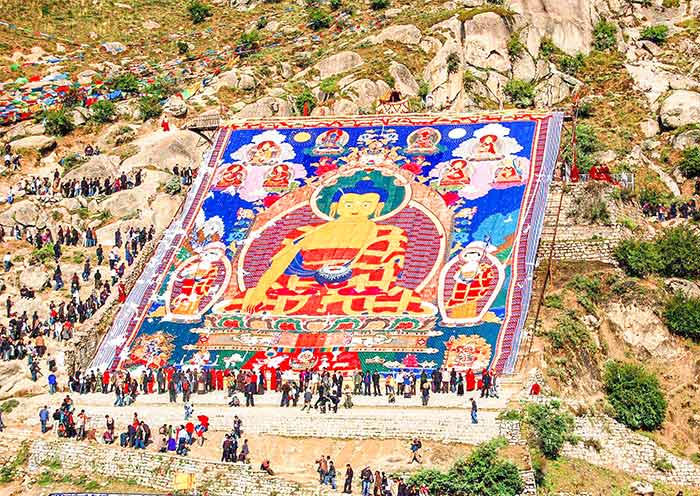
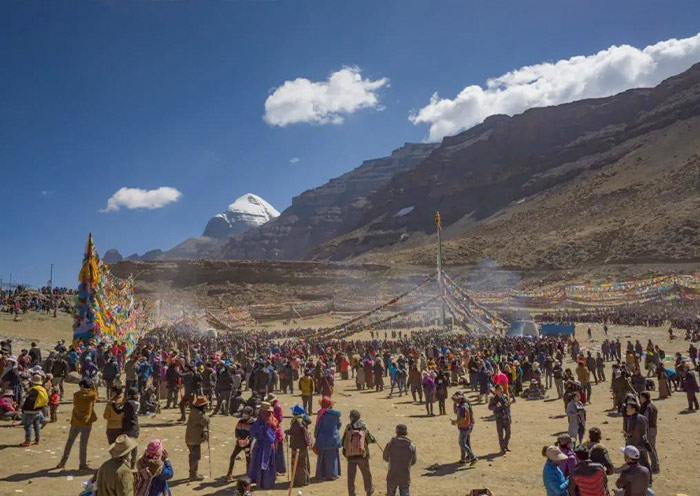
Nepal:
Holi: This festival of colors takes place in March, splashing the streets with vibrant powders and joyous interactions, embodying the victory of good over evil.
Dashain: The longest and the most auspicious festival in the Nepalese annual calendar, occurring around September or October, it's celebrated with great rejoicing, kite flying, and family gatherings.
Tihar (Diwali): Following Dashain, Tihar is the festival of lights, with homes decorated beautifully, and lights and lanterns illuminating the cities, typically in October or November.
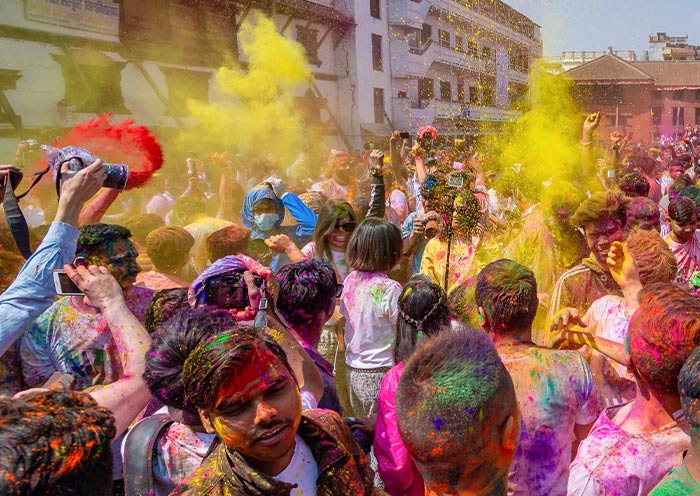
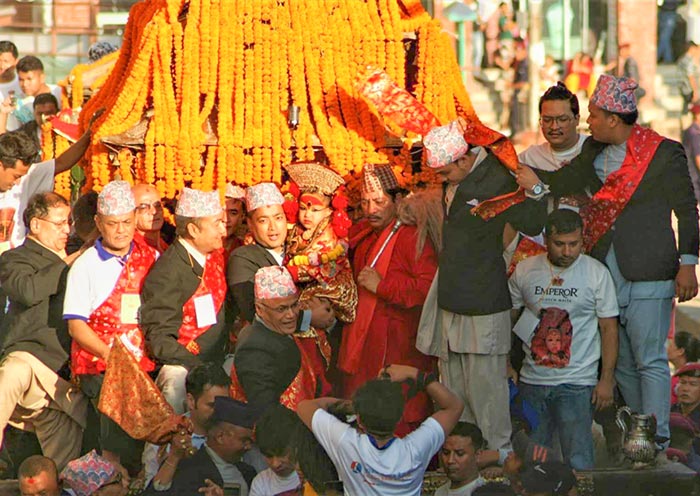
Bhutan:
Paro Tshechu: Held in spring (March or April), this is one of the most significant and colorful festivals with dances, elaborate costumes, and the unfurling of the giant thangka or "thongdrel."
Thimphu Tshechu: This is Bhutan's largest festival, usually taking place in September or October. It's marked by several days of traditional dances, religious figures clad in incredible masks, and the gathering of Bhutanese in their finest attire. Bhutan's Festival Guide >>
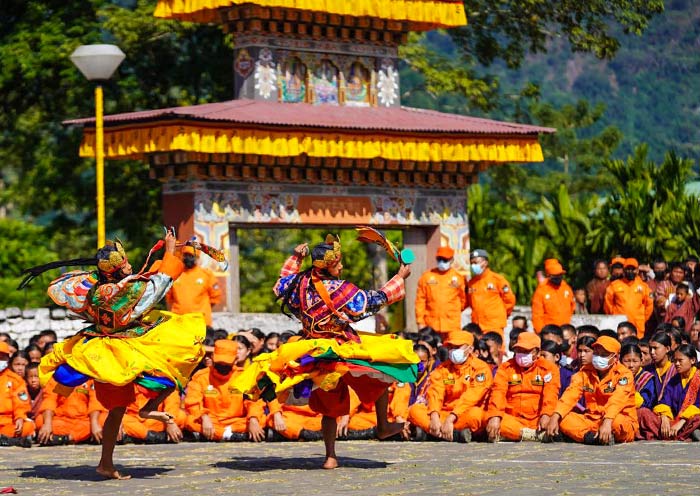
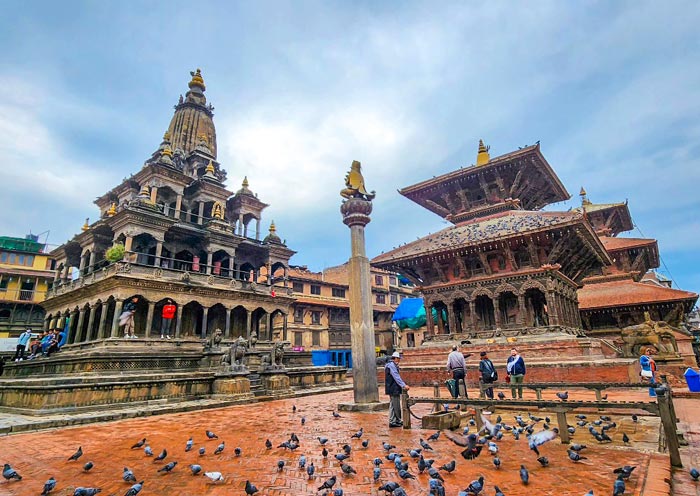
Best Time to Travel Bhutan Tibet and Nepal: Outdoor Activities
If you're an outdoor enthusiast, consider heading to Tibet, Nepal, and Bhutan for hiking, mountaineering, and exploring the great outdoors during the months of April to May and September to November. These months offer ideal weather conditions and breathtaking landscapes for adventurers like you.
Tibet
Trekking and Mountaineering: The best times are April to early June and September to October when the weather is dry and the skies are clear, providing the best views of the Himalayas. This is the ideal time for treks to Everest Base Camp or to admire the grandeur of Mt. Kailash.
Motorbike and Cycling Tours: The same periods are also excellent for road trips across the Tibetan plateau, as the roads are generally in good condition and the weather is favorable. Tibet Bike Tours >>
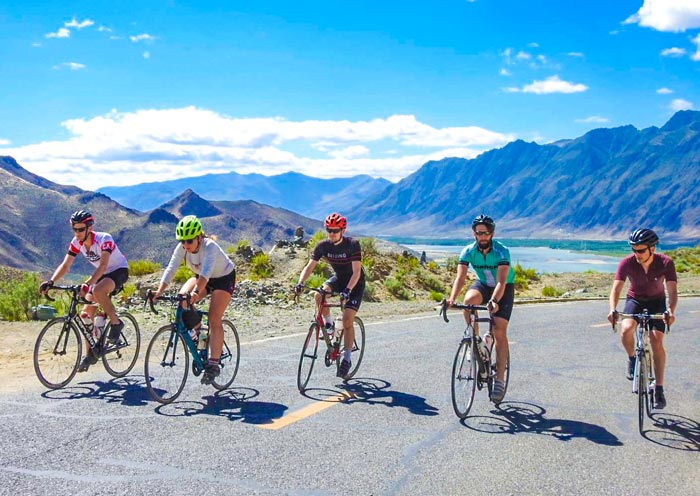
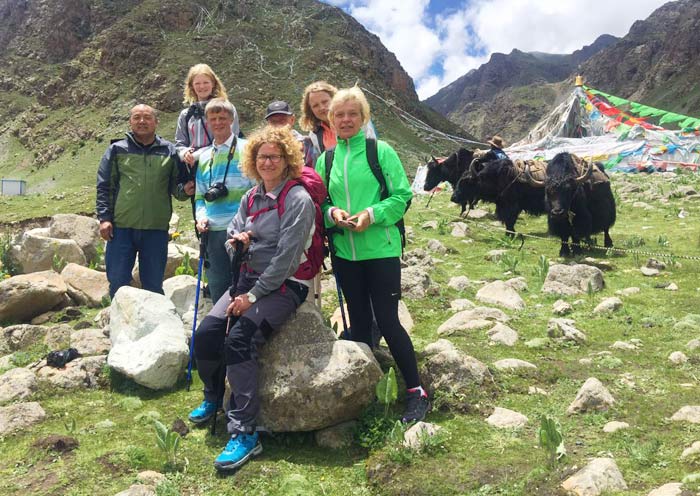
Nepal
Trekking: Pre-monsoon (March to May) and post-monsoon (late September to November) seasons are prime for trekking. The weather is moderate, and the skies are clear, offering spectacular views on popular treks like the Annapurna Circuit, Everest Base Camp, and the Langtang Valley.
White Water Rafting: The best time for rafting is from October to mid-December and from March to early May when the rivers are full but not too wild, making for an exhilarating yet safe experience.
Wildlife Safaris: Visit Chitwan National Parks during October to March when the weather is cooler and the jungle foliage is less dense, improving chances of wildlife sightings.
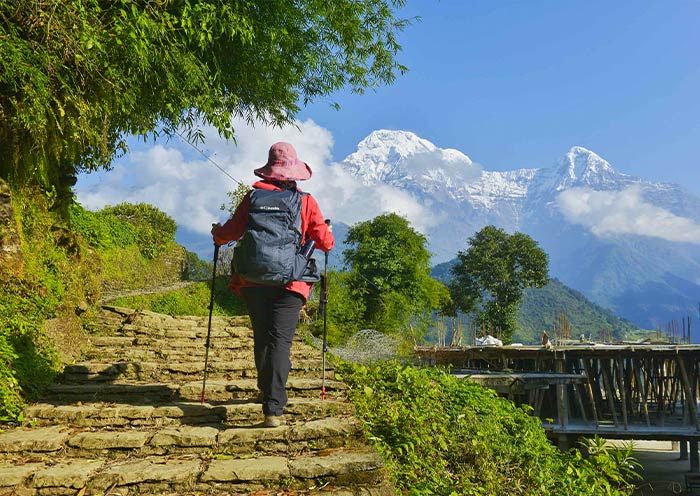
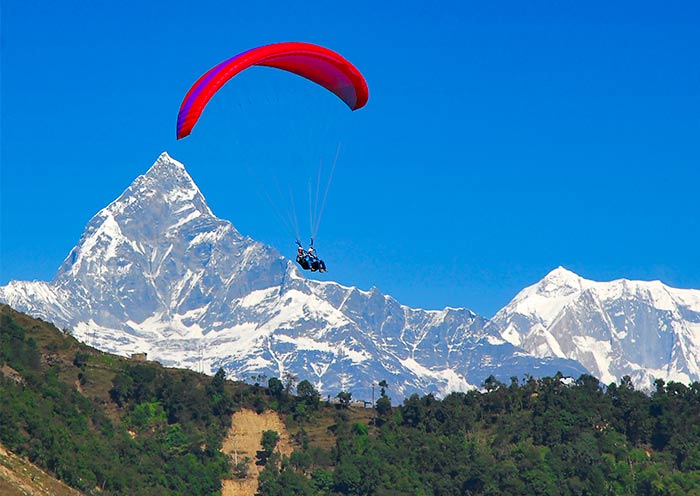
Bhutan
Trekking: March to May and September to November are optimal for trekking in Bhutan. Trails like the Jomolhari Trek and the Druk Path Trek are most accessible and offer clear views of the majestic landscapes.
Mountain Biking: These periods are also great for mountain biking, as the weather is conducive to long rides through the country's rugged terrain.
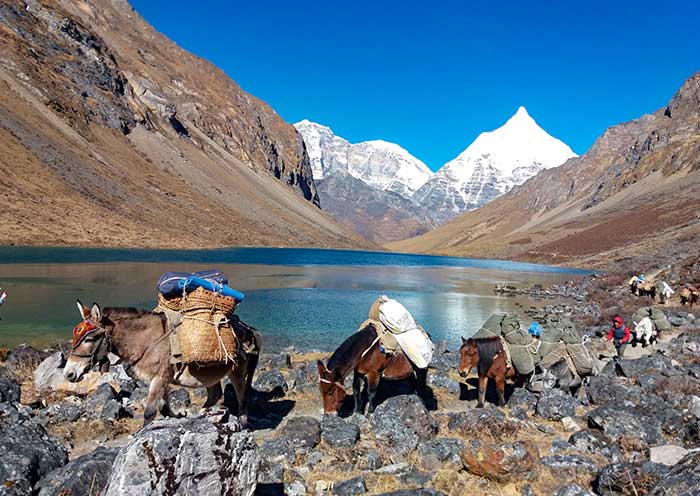
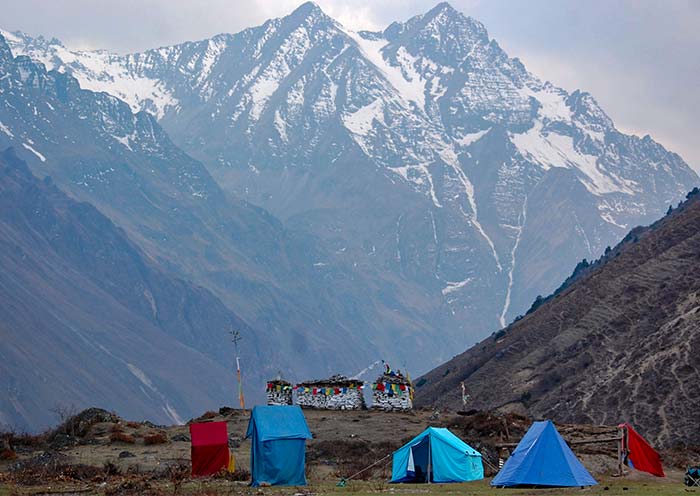
Crowd Considerations
The peak tourist season in Tibet, Nepal, and Bhutan is primarily during spring (March to May) and autumn (September to November), attracting large crowds.
If you prefer to avoid the crowds, it's recommended to consider visiting during the winter season (December to February). During this time, the number of tourists decreases, giving you a more authentic local experience. Additionally, you can take advantage of discounts on hotels and flights during the off-peak season, which can help lower your travel budget.
How to Plan a Bhutan Tibet and Nepal Tour
To take in the quintessential sights of Bhutan, Nepal, and Tibet in one go—including Tibet's Potala Palace, the Everest Base Camp, Kathmandu in Nepal, and Bhutan's iconic Tiger's Nest Monastery, Paro, and Thimphu—a classic exploration would ideally span 13 to 15 days.
13-15 Days Bhutan Nepal Tibet Itinerary:
Day 1: Arrival in Lhasa
Day 2-3: Explore the highlights of Lhasa (Potala Palace, Jokhang Temple, Sera Monastery, Barkhor Street)
Day 4: Travel from Lhasa to Shigatse (passing through Yamdrok Lake, Karola Glacier)
Day 5: Shigatse to Everest Base Camp
Day 6: Everest Base Camp to Gyirong Port
Day 7: Cross the border at Gyirong Port and proceed to Kathmandu, Nepal
Day 8-9: Sightseeing in Kathmandu (Monkey Temple, Boudhanath Stupa, Pashupatinath Temple, etc.)
Day 10: Fly to Paro Airport, Bhutan
Day 11-13/15: Classic sightseeing in Bhutan (Taktsang Monastery, Thimphu - the capital city, Punakha Dzong, etc.)
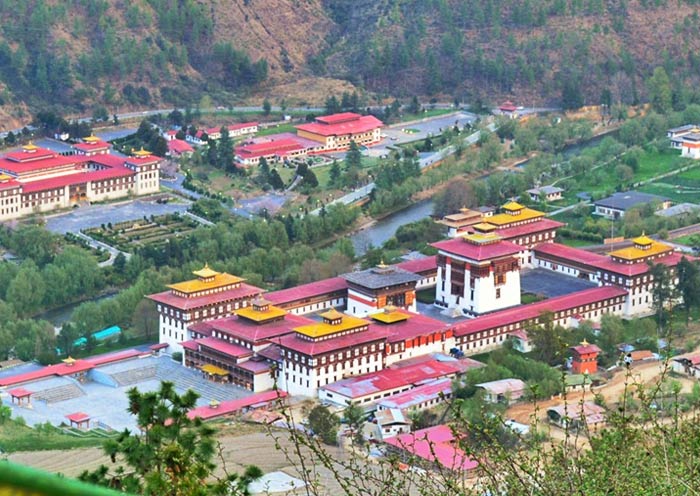
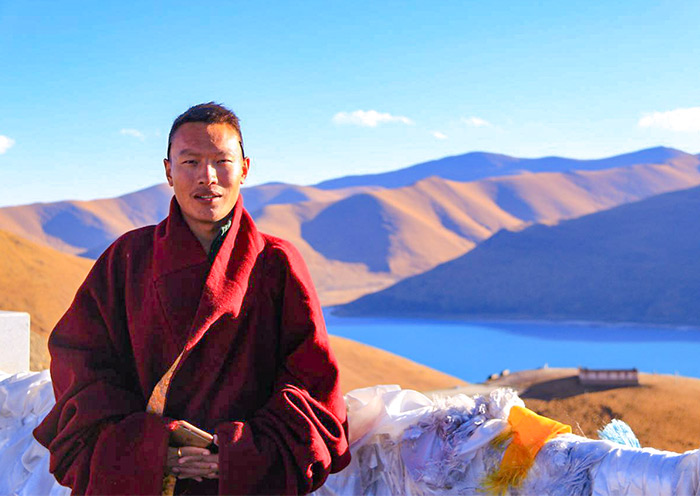
Travel with AOT, Unlock the Magic of the Tibet, Nepal & Bhutan
Discover the magic ofNepal and Bhutan with Asia Odyssey Travel. With over a decade of expertise and deep-rooted local connections, we craft journeys that unveil the true essence of Himalaya regions including Nepal, Bhutan, and Tibet.
Our tours offer tailored itineraries, expert guidance on local customs, and seamless logistics across diverse destinations - All at the Best Prices! Whether you seek luxury tours, value-driven group tours, or expeditionary learning experiences, Asia Odyssey Travel is your best travel mate every step of the way.
Experience Nepal & Bhutan like never before with our commitment to exceptional service:
- Personalized Planning: Skip the research, let our experts craft your dream Himalaya adventure
- Peace of Mind: Flights, hotels, visa? We handle it all!
- Hiccups? We're your 24/7 travel guardian.
- Time-saving: One-stop shop, say goodbye to endless booking hassles
- Journey with Awareness: Asia Odyssey Travel's local team ensures experiences that are culturally sensitive
- Travel like a Local: Insider tips, secret savings, and authentic experiences await with our well-established local network
Asia Odyssey Travel, Your Best Travel Mate. Turn Travel Dreams into Reality!Contact us today. Your dream Himalaya trip awaits!
If you have any questions about this article, please contact us by submitting the following form and we'll immediately get back to you.

